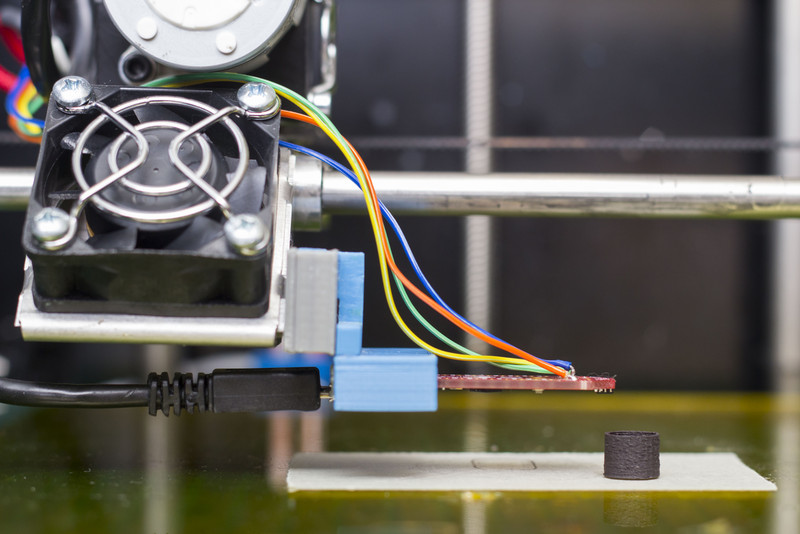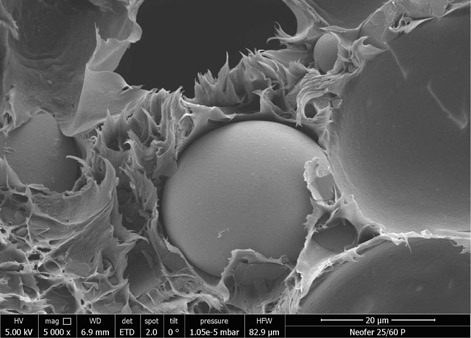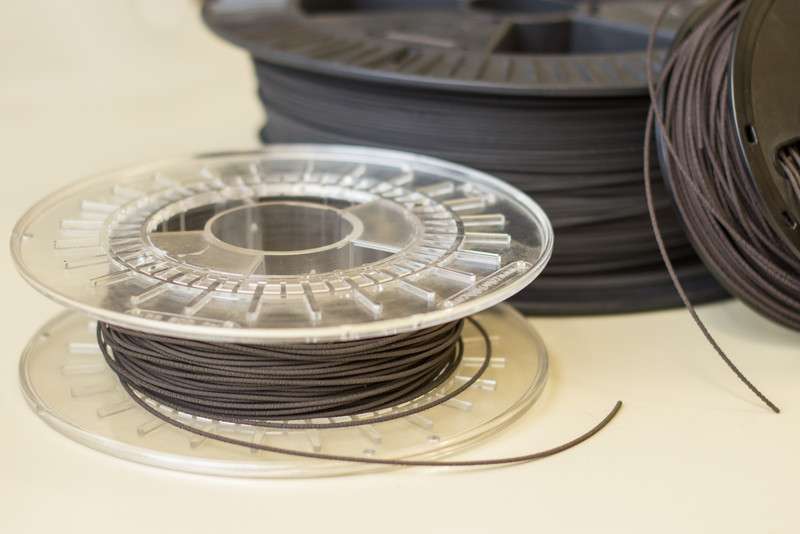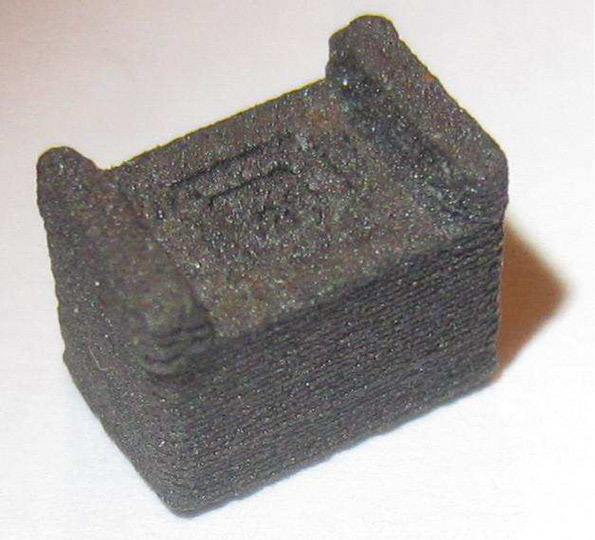We print on a 3D printer magnets of a given shape

Printed magnet in the shape of a small cup
Conventional magnets are traditionally made by sintering. This limits their shape. Engineers and designers in the development of products have to choose between the magnets available forms.
On the other hand, polymer magnets (polymagnet) have recently appeared. They use a mixture of magnetic powder NdFeB (granule diameter of about 45 microns) and plastic or rubber, and made by injection molding. These magnets have an almost arbitrary shape. In fact, you can pre-program the shape of the magnetic field - and make a permanent magnet of the required shape just for your design. This technology is already used in industry, and magnets are used, including for various tricks .
Polymer magnets have a flaw. For technological and economic reasons, they are made of an isotropic powder, so the force - the value (BH) max - of such magnets is two or more times less than that of conventional magnets. It would be possible to use a magnetic powder with better properties, but in this case the economic sense of producing such magnets is lost, because their cost increases greatly, and an increased (BH) max , that is, a strong magnet, is needed by no means to everyone. However, it's not about that.
')
Until now, there was no technology for the production of polymer magnets with a complex structure. Thanks to the engineers from the Vienna University of Technology, the first work in this field appeared . For the manufacture of magnets, engineers applied 3D printing (and to compare the quality, ordinary injection molding).

Engineers of the Vienna University of Technology next to a printer, a computer for calculating the magnetic field, a 3D printer and a thread for printing a polymer magnet
Materials for 3D printing and injection molding are made by processing a commercial mixture of Neofer 25 / 60p . In this powder, NdFeB particles are mixed in polyamide 11, which is clearly seen in the photograph from the microscope.

Neofer 25 / 60p powder in a scanning electron microscope
Polyamide 11 - structural plastic of high elasticity, just what you need. In the powder, the NdFeB granules are randomly mixed, which leads to the isotropic properties of the magnet.
Material properties are shown in the table: raw powder, 3D printing mix, and casting mix.

A scanning electron microscope study showed that NdFeB particles in Neofer 25 / 60p granules have a spherical shape of about 50 ± 20 microns. For 3D printing, the material was pre-atomized and heat treated. That is, sifted and warmed up. Five-millimeter pellets of Neofer 25 / 60p were then molded into threads of the desired diameter of 1.75 ± 0.1 mm.

Engineers have chosen the Dutch Builder 3D Printer Builder . This is a commercially available model that sells online for as low as € 1675 for the smallest model and up to € 3,750 for the largest. Scientists liked the model with a working area of 220 × 210 × 164 mm and a layer thickness of 0.05–0.3 mm. The diameter of the nozzle is 0.4 mm. Threads with a diameter of 1.75 mm were loaded into it. Empirically, we set the optimal printing parameters shown in the table.

In this way, engineers printed a magnet of a given shape with a pre-calculated magnetic field.

The magnet design was calculated by solving Maxwell's equations, as described in the scientific papers of Bruckner and his colleagues on the macroscopic simulation of isotropic permanent magnets ( 1 , 2 ).

Initially, the product did not have a magnetic field, but its magnetized - placed inside the coil in a magnetic field with an induction of 4 T.
In order to verify the experimental results, the strength and directionality of the magnetic field, a device with a Hall sensor with a measuring range of ± 130 mT was manufactured and calibrated. It made it possible to measure the 3D shape of the magnetic field outside the magnet. The form almost coincided with the calculated form of the ideal magnet field from a computer simulation.

Comparison of real and calculated magnetic fields in all axes
A product of complex shape measuring 7 × 5 × 5.5 mm is printed in layers with a height of 0.1 mm with a thickness of 0.8 mm. The strength of the resulting magnet indicates that 3D printing is quite suitable for the manufacture of permanent magnets of complex shape. Such magnets are not inferior in their properties to polymeric magnets made of the same material by injection molding. In addition, they have a smaller mass.
Researchers note that in some devices permanent magnets of a special shape are needed. For example, a magnet that produces a strong field in one direction, but a field as weak as possible in the orthogonal direction.
The most remarkable thing is that using the described method, we can produce magnets not only of arbitrary shape, but also use a variety of materials: from soft magnetic alloys to hard magnetic NdFeB or ferrite alloys.
The ability to locally print magnets of any shape from materials with specially selected magnetic properties in the workshop allows you to make magnets that are not commercially available. And which generally can not be made by traditional production methods.
The scientific work of Austrian specialists was published on October 17, 2016 in the journal Applied Physics Letters (doi: 10.1063 / 1.4964856).
Source: https://habr.com/ru/post/398713/
All Articles